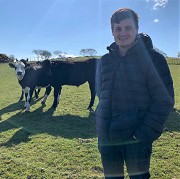Discussion
Controlling fasciolosis in livestock is becoming an increasing challenge globally as climate change and anthelmintic resistance increase liver fluke prevalence and reduces treatment efficacy, respectively. With this, there is growing interest in applying alternative fasciolosis control strategies such as grazing and land management practices on farms. To effectively apply these practices, an understanding of where Fasciola hepatica's intermediate snail host, Galba truncatula resides on farmland is required to enable infection risk areas to be targeted to reduce snail presence and infections in grazing livestock. However, our understanding of G. truncatula spatial ecology is limited, with traditional survey methods used to map G. truncatula habitats on farmland inconsistent, time consuming, costly and requires significant expertise to be applied efficiently. In recent years, we have developed and optimised an environmental DNA assay to detect G. truncatula eDNA in small water bodies on farmland. Optimisation of this assay has created a protocol where 500 ml of water is collected from small water body habitats on farmland and filtered through 3 um pore filters, with DNA extracted from filters prior to DNA amplification. This assay has been used map G. truncatula habitats on farmland, enabling farmers to apply alternative fasciolosis control strategies to control fluke infections in grazing cattle and sheep. We have also used eDNA analysis to identify factors associated with G. truncatula presence in small water body habitats and to monitor interaction between grazing livestock, fluke infection risk areas and subsequent infection burdens. We believe that eDNA analysis has potential to become a valuable tool for intermediate snail host research and trematode control in future. 

